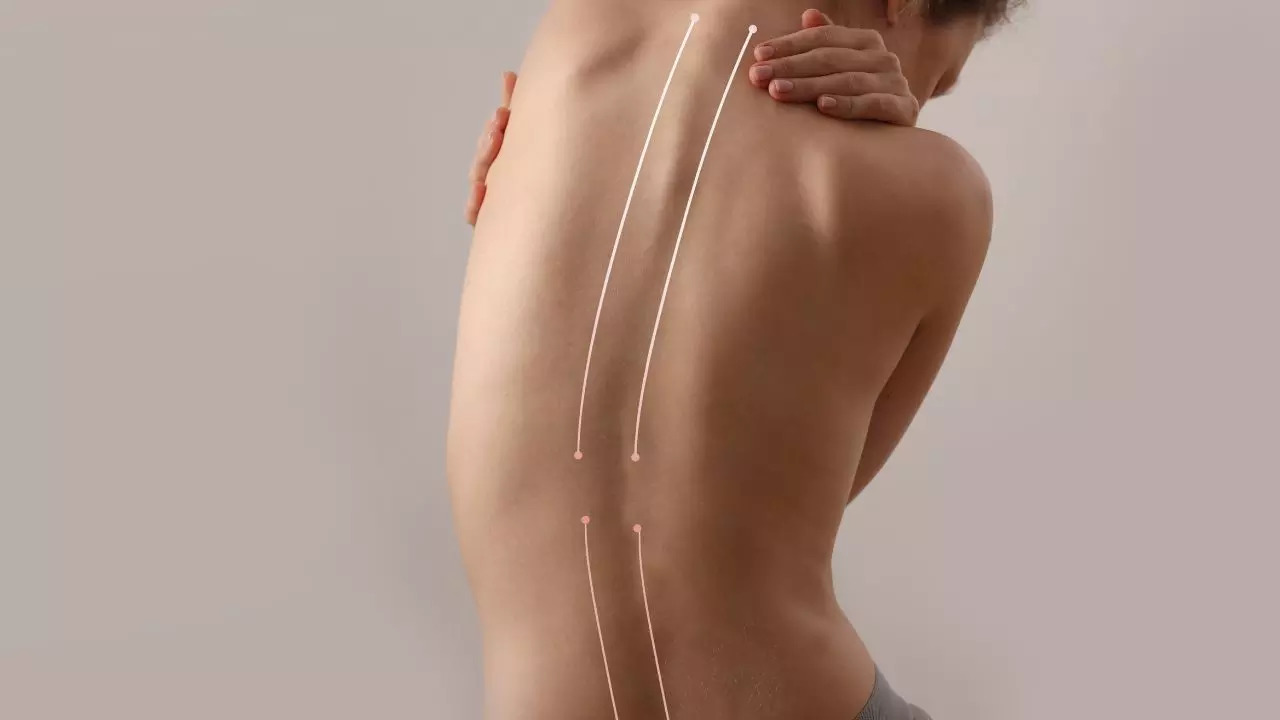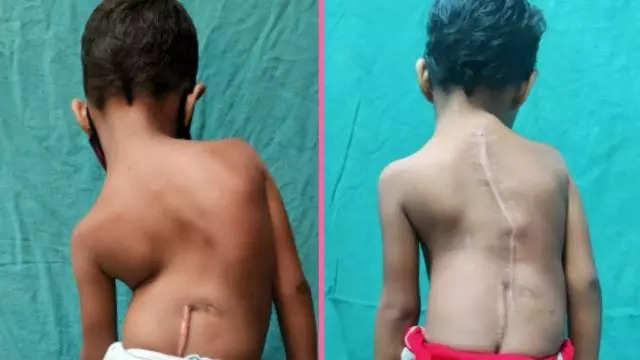Contents
Life-saving spine surgery was done on a 5-year-old girl from Rajasthan, know about congenital scoliosis
The 5-year-old patient began showing symptoms of spinal deformity when she was about three years old. As she grew older, it progressed rapidly. She also developed severe pain on one side of her back as her rib cage began to push into her pelvic bone. Read on to learn more about surgery and congenital scoliosis.

Spinal cord surgery of a 5-year-old girl from Rajasthan was successful
A 5-year-old girl from Kotputli in Rajasthan has had her spinal cord surgery done successfully. She was suffering from a serious condition. Congenital Scoliosis Due to which the girl suffered a lot of pain and the spinal deformity posed a threat to the development of her heart and lungs. Doctors say that the surgery was done to save her life and it was very necessary and unavoidable.
The patient began to show symptoms of spinal deformity when she was about three years old. As she grew older, the symptoms worsened. She also began to have severe pain on one side of her back as the spinal curve caused her rib cage to press into her pelvic bone. She also began to have shortness of breath after normal work and play, possibly due to pressure on the lungs on one side of the spinal curve.
Dr Tarun Suri, Senior Consultant and Head of Spine Surgery Department, Amrita Hospital, Faridabad, said that the girl was examined by the spine surgery team. The patient’s scoliosis curve was around 90 degrees at the time of admission and serial X-rays showed that it was rapidly increasing. “She also had severe costo-pelvic impingement, a condition in which the patient’s rib cage starts pushing into the pelvic bone and causes severe pain; the space available for the left lung and heart was also reduced significantly due to the severe scoliosis, making this surgery very critical.”
If left untreated, the curve will worsen and impede the child’s future growth. The effects on the lungs and heart are also likely to reduce the child’s life expectancy. Dr Suri said the only way out is through a complex spine surgery.

A team of 15 people headed by Dr Tarun Suri performed the six-hour surgery. She underwent growing rod surgery, in which screws are placed up and down the spine, attached to rods that are extended every six months to allow for spinal growth until she is around 10 years old, after which definitive fusion surgery can be performed. The five-year-old recovered very fast after the surgery. A brace was made for her to support the spine and she was able to walk 2 days after the surgery.
What is congenital scoliosis?
Congenital scoliosis is a condition in which the spine has a sideways curvature caused by a defect present at birth. The condition is seen in only 1 in 10,000 newborns. OrthoInfo says children with congenital scoliosis sometimes have other health problems, such as kidney or bladder problems. Even if congenital scoliosis is present at birth, it is sometimes impossible to see any spinal problems until the child reaches adolescence.
Causes of congenital scoliosis
Here, take a look at some of the following conditions that may occur during the development of the baby in the womb and which eventually lead to this condition.
- the bones in the spine (vertebrae) do not form normally
- Bones may be partially formed
- the bones do not separate as they should
- One or more bones in the spine may be absent.
Symptoms of Congenital Scoliosis
Here’s a look at some of the common symptoms seen in congenital scoliosis, according to the Children’s Hospital of Philadelphia.
- Slouching, uneven shoulders, with one shoulder bone protruding more than the other
- Neck rotation that causes the head to tilt in one direction
- Bulging of ribs on one side
- Uneven waist
- one hip higher than the other
- an overall feeling of being tilted to one side
- In rare cases, there may be a problem with the spinal cord or nerves, causing weakness, numbness or loss of coordination.
Get the latest news on Times Now as well as breaking news and top headlines from across health and the world.


